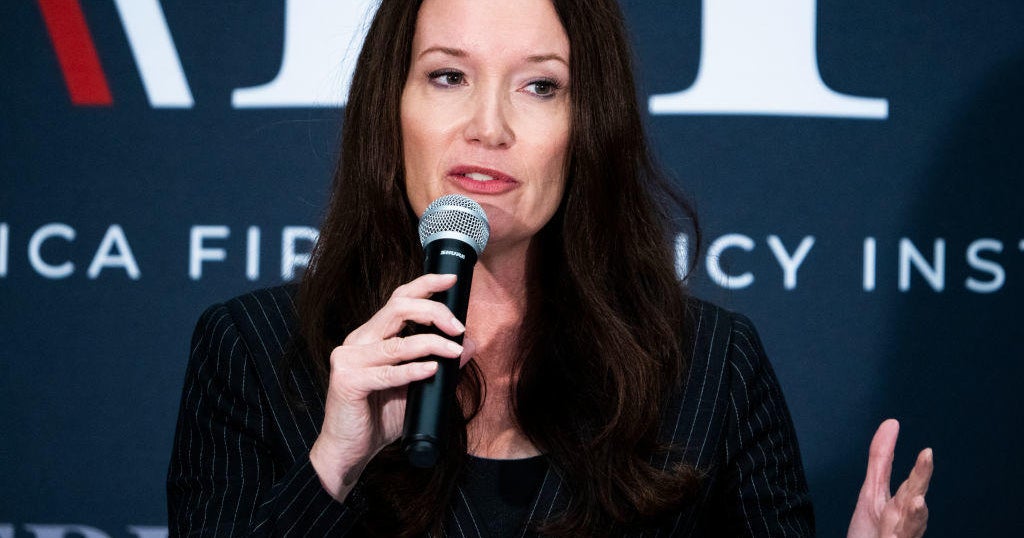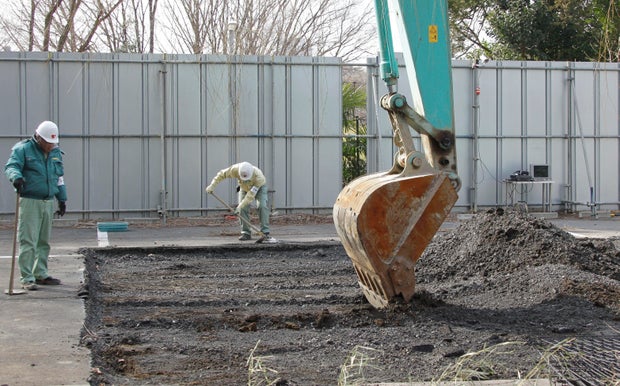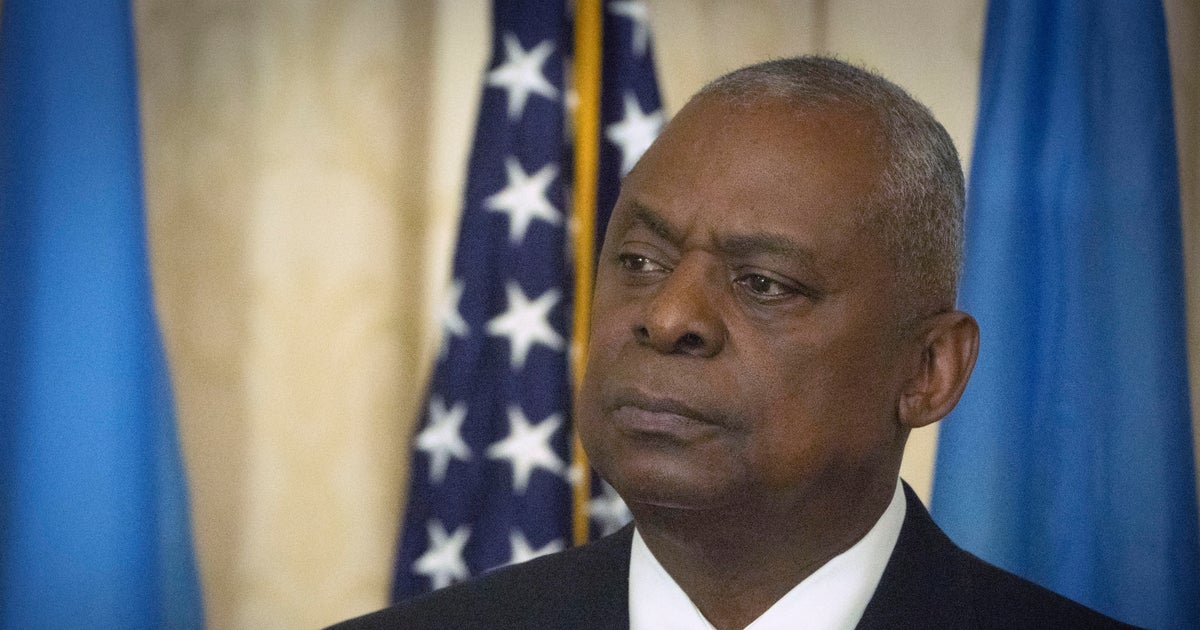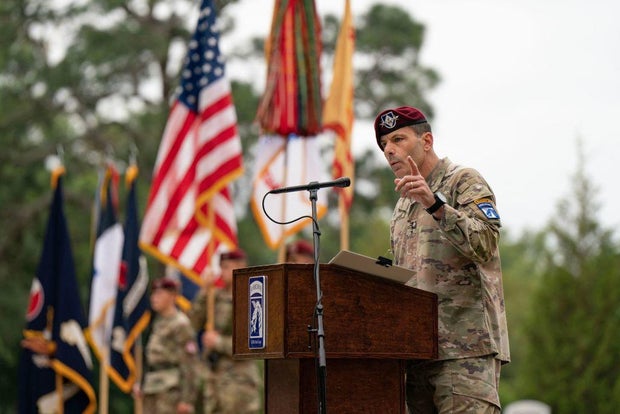CBS News
Mysterious skulls and skeletons unearthed 35 years ago could hold evidence of Japanese war crimes, activists say

Depending on who you ask, the bones that have been sitting in a Tokyo repository for decades could be either leftovers from early 20th century anatomy classes, or the unburied and unidentified victims of one of the country’s most notorious war crimes.
A group of activists, historians and other experts who want the government to investigate links to wartime human germ warfare experiments met over the weekend to mark the 35th anniversary of their discovery and renew a call for an independent panel to examine the evidence.
Japan’s government has long avoided discussing wartime atrocities, including the sexual abuse of Asian women known as “comfort women” and Korean forced laborers at Japanese mines and factories, often on grounds of lack of documentary proof. Japan has apologized for its aggression in Asia, but since the 2010s it has been repeatedly criticized in South Korea and China for backpedaling.
Around a dozen skulls, many with cuts, and parts of other skeletons were unearthed on July 22, 1989, during construction of a Health Ministry research institute at the site of the wartime Army Medical School. The school’s close ties to a germ and biological warfare unit led many to suspect that they could be the remains of a dark history that the Japanese government has never officially acknowledged.
Headquartered in then-Japanese-controlled northeast China, Unit 731 and several related units injected prisoners of war with typhus, cholera and other diseases, according to historians and former unit members. They also say the unit performed unnecessary amputations and organ removals on living people to practice surgery and froze prisoners to death in endurance tests. Japan’s government has acknowledged only that Unit 731 existed.
Koji Sasahara / AP
Led by Gen. Shiro Ishii, Unit 731 researchers “used men and women as involuntary test subjects, causing them unspeakable pain and suffering as they were injected with germs, fed infected foods, and bitten by rodents and fleas,” according to the U.S. Naval Institute.
The institute said Unit 731 also produced devices to poison individuals with fountain pens and pointed walking sticks, as well as “techniques for clandestinely poisoning drinking wells.” The unit also developed a bomb “that could destroy vegetation in an area of 20 square miles” and experimented with artillery shells carrying gas and biological agents, the institute said.
Top Unit 731 officials were not tried in postwar tribunals as the U.S. sought to get ahold of chemical warfare data, historians say.
“Perhaps the most notorious was Gen. Ishii of Unit 731, who escaped postwar prosecution in exchange, apparently, for supplying the U.S. government with details of his gruesome human experiments,” historian Edward Drea wrote in an essay published by the U.S. Archives.
Lower-ranked officials were tried by Soviet tribunals. Some of the unit’s leaders became medical professors and pharmaceutical executives after the war.
“We just want to find the truth”
A previous Health Ministry investigation said the bones couldn’t be linked to the unit, and concluded that the remains were most likely from bodies used in medical education or brought back from war zones for analysis, in a 2001 report based on questioning 290 people associated with the school.
It acknowledged that some interviewees drew connections to Unit 731. One said he saw a head in a barrel shipped from Manchuria, northern China, where the unit was based. Two others noted hearing about specimens from the unit being stored in a school building, but had not actually seen them. Others denied the link, saying the specimens could include those from the prewar era.
A 1992 anthropological analysis found that the bones came from at least 62 and possibly more than 100 different bodies, mostly adults from parts of Asia outside Japan. The holes and cuts found on some skulls were made after death, it said, but did not find evidence linking the bones to Unit 731.
But activists say that the government could do more to uncover the truth, including publishing full accounts of its interviews and conducting DNA testing.
Kazuyuki Kawamura, a former Shinjuku district assembly member who has devoted most of his career to resolving the bone mystery, recently obtained 400 pages of research materials from the 2001 report using freedom of information requests, and says it shows that the government “tactfully excluded” key information from witness accounts.
The newly published material doesn’t contain a smoking gun, but it includes vivid descriptions – the man who described seeing a head in a barrel also described helping to handle it and then running off to vomit – and comments from several witnesses who suggested that more forensic investigation might show a link to Unit 731.
“Our goal is to identify the bones and send them back to their families,” said Kawamura. The bones are virtually the only proof of what happened, he says. “We just want to find the truth.”
Health Ministry official Atsushi Akiyama said that witness accounts had already been analyzed and factored into the 2001 report, and the government’s position remains unchanged. A key missing link is a documentary evidence, such as a label on a specimen container or official records, he said.
Documents, especially those involving Japan’s wartime atrocities, were carefully destroyed in the war’s closing days and finding new evidence for a proof would be difficult.
Akiyama added that a lack of information about the bones would make DNA analysis difficult.
Hideo Shimizu, who was sent to Unit 731 in April 1945 at age 14 as lab technician and joined the meeting online from his home in Nagano, said he remembers seeing heads and body parts in formalin jars stored in a specimen room in the unit’s main building. One that struck him most was a dissected belly with a fetus inside. He was told they were “maruta” – logs – a term used for prisoners chosen for experiments.
Days before Japan’s Aug. 15, 1945 surrender, Shimizu was ordered to collect bones of prisoners’ bodies burned in a pit. He was then given a pistol and a packet of cyanide to kill himself if he was caught on his journey back to Japan.
He was ordered never to tell anyone about his Unit 731 experience, never contact his colleagues, and never seek a government or medical job.
Shimizu said he cannot tell if any specimen he saw at the 731 could be among the Shinjuku bones by looking at their photos, but that what he saw in Harbin should never be repeated. When he sees his great-grandchildren, he said, they remind him of that fetus he saw and the lives lost.
“I want younger people to understand the tragedy of war,” he said.
CBS News
Compromise deal reached at COP29 climate talks for $300 billion a year to poor nations

Countries agreed on a deal to inject at least $300 billion annually in humanity’s fight against climate change, aimed at helping poor nations cope with the ravages of global warming at tense United Nations climate talks in the city where industry first tapped oil.
The $300 billion will go to developing countries who need the cash to wean themselves off the coal, oil and gas that causes the globe to overheat, adapt to future warming and pay for the damage caused by climate change’s extreme weather. It’s not near the full amount of $1.3 trillion that developing countries were asking for, but it’s three times the $100 billion a year deal from 2009 that is expiring. Delegations said this deal is headed in the right direction, with hopes that more money flows in the future.
“Everybody is committed to having an agreement,” Fiji delegation chief Biman Prasad said as the deal was being finalized. “They are not necessarily happy about everything, but the bottom line is everybody wants a good agreement.”
It’s also a critical step toward helping countries on the receiving end create more ambitious targets to limit or cut emissions of heat-trapping gases that are due early next year. It’s part of the plan to keep cutting pollution with new targets every five years, which the world agreed to at the U.N. talks in Paris in 2015.
The Paris agreement set the system of regular ratcheting up climate fighting ambition as away to keep warming under 1.5 degrees Celsius above pre-industrial levels. The world is already at 1.3 degrees Celsius and carbon emissions keep rising.
Countries also anticipate that this deal will send signals that help drive funding from other sources, like multilateral development banks and private sources. That was always part of the discussion at these talks — rich countries didn’t think it was realistic to only rely on public funding sources — but poor countries worried that if the money came in loans instead of grants, it would send them sliding further backward into debt that they already struggle with.
“The $300 billion goal is not enough, but is an important down payment toward a safer, more equitable future,” said World Resources Institute President Ani Dasgupta. “This deal gets us off the starting block. Now the race is on to raise much more climate finance from a range of public and private sources, putting the whole financial system to work behind developing countries’ transitions.”
It’s more than the $250 billion that was on the table in the first draft of the text, which outraged many countries and led to a period of frustration and stalling over the final hours of the summit. After an initial proposal of $250 billion a year was soundly rejected, the Azerbaijan presidency brewed up a new rough draft of $300 billion, that was never formally presented, but also dismissed roundly by African nations and small island states, according to messages relayed from inside.
The several different texts adopted early Sunday morning included a vague but not specific reference to last year’s Global Stocktake approved in Dubai. Last year there was a battle about first-of-its-kind language on getting rid of the oil, coal and natural gas, but instead it called for a transition away from fossil fuels. The latest talks only referred to the Dubai deal, but did not explicitly repeat the call for a transition away from fossil fuels.
Countries also agreed on the adoption of Article 6, creating markets to trade carbon pollution rights, an idea that was set up as part of the 2015 Paris Agreement to help nations work together to reduce climate-causing pollution. Part of that was a system of carbon credits, allowing nations to put planet-warming gasses in the air if they offset emissions elsewhere. Supporters said a U.N.-backed market could generate up to an additional $250 billion a year in climate financial aid.
Despite its approval, carbon markets remain a contentious plan because many experts say the new rules adopted don’t prevent misuse, don’t work and give big polluters an excuse to continue spewing emissions.
“What they’ve done essentially is undermine the mandate to try to reach 1.5,” said Tamara Gilbertson, climate justice program coordinator with the Indigenous Environmental Network. Greenpeace’s An Lambrechts, called it a “climate scam” with many loopholes.
With this deal wrapped up as crews dismantle the temporary venue, many have eyes on next year’s climate talks in Belem, Brazil.
CBS News
GOP senator blocks promotion of general involved in Afghanistan withdrawal, sources say

The promotion of a three-star general who was part of the 2021 U.S. withdrawal from Afghanistan has been paused by Republican Sen. Markwayne Mullin of Oklahoma, three sources familiar with the move confirmed to CBS News Saturday.
Lt. Gen. Christopher Donahue was slated to be promoted to a four-star rank and take command of the U.S. Army in Europe. However, he was not included in a batch of nearly 1,000 promotions that moved through the Senate Armed Services Committee this week despite receiving a Pentagon recommendation.
Mullin has put a hold on the promotion. The intention is to allow for the new Republican-controlled Congress and President-elect Donald Trump to weigh in on the promotion given Donahue’s involvement in the Afghanistan withdrawal, two sources familiar with the situation told CBS News.
Behind the scenes, there is an effort underway by the Army and other allies to convince Congress to move forward and lift the hold, which appears to be politically motivated, sources said.
ALLISON JOYCE/AFP via Getty Images
During the campaign, Trump frequently mentioned his surprise that no officers were consequently fired by President Biden for the chaotic withdrawal.
Military officers execute U.S. policy but do not create it. It was the Trump administration that in February 2020 brokered the deal with the Taliban to withdraw U.S. forces from Afghanistan, but it was Mr. Biden who decided to execute that withdrawal despite the Taliban breaking the terms of that U.S. agreement.
Donahue was the last U.S. soldier to exit Afghanistan in 2021. The U.S. evacuated about 125,000 people, including 6,000 Americans, over the course of its withdrawal, during which dozens of Afghans and 13 U.S. service members were killed in a suicide bombing outside Hamid Karzai airport in Kabul.
The U.S. underestimated the speed with which the Taliban would capture Kabul and the well-documented U.S. logistical and planning failures have been a focus of multiple internal probes at the Pentagon, State Department, and in Congress.
An extensive State Department report released last year found that “insufficient” planning, communication failures and an inability to grasp “the scale and scope of the operation” contributed to the chaotic operation.
CBS News has reached out to Mullin’s office but did not receive a response. It is not clear whether Trump is aware of the hold.
contributed to this report.
CBS News
Trump picks former White House aide Brooke Rollins to lead the USDA

President-elect Donald Trump said Saturday that he will nominate former White House aide Brooke Rollins to be his agriculture secretary, the last of his picks to lead executive agencies and another choice from within his established circle of advisers and allies.
The nomination must be confirmed by the Senate, which will be controlled by Republicans when Trump takes office Jan. 20, 2025. Rollins would succeed Tom Vilsack, President Biden’s agriculture secretary who oversees the sprawling agency that controls policies, regulations and aid programs related to farming, forestry, ranching, food quality and nutrition.
Rollins, who graduated from Texas A&M University with a degree in agricultural development, is a longtime Trump associate who served as his former domestic policy chief. She is president and CEO of the America First Policy Institute, a group helping to lay the groundwork for a second Trump administration.
Tom Williams/CQ-Roll Call, Inc via Getty Images
Rollins, 52, previously served as an aide to former Texas Gov. Rick Perry and ran a think tank, the Texas Public Policy Foundation.
Rollins’ pick completes Trump’s selection of the heads of executive branch departments, just two and a half weeks after the former president won the White House once again. Several other picks that are traditionally Cabinet-level remain, including U.S. Trade Representative and head of the Small Business Administration.
Trump didn’t offer many specifics about his agriculture policies during the campaign, but farmers could be affected if he carries out his pledge to impose widespread tariffs. During the first Trump administration, countries like China responded to Trump’s tariffs by imposing retaliatory tariffs on U.S. exports like the corn and soybeans routinely sold overseas. Trump countered by offering massive multibillion-dollar aid to farmers to help them weather the trade war.
President Abraham Lincoln founded the USDA in 1862, when about half of all Americans lived on farms. The USDA oversees multiple support programs for farmers; animal and plant health; and the safety of meat, poultry and eggs that anchor the nation’s food supply. Its federal nutrition programs provide food to low-income people, pregnant women and young children. And the agency sets standards for school meals.
Robert F. Kennedy Jr., Trump’s nominee to lead the Department of Health and Human Services, has vowed to strip ultraprocessed foods from school lunches and to stop allowing Supplemental Nutrition Assistance Program beneficiaries from using food stamps to buy soda, candy or other so-called junk foods. But it would be the USDA, not HHS, that would be responsible for enacting those changes.
In addition, HHS and USDA will work together to finalize the 2025-2030 edition of the Dietary Guidelines for Americans. They are due late next year, with guidance for healthy diets and standards for federal nutrition programs.











